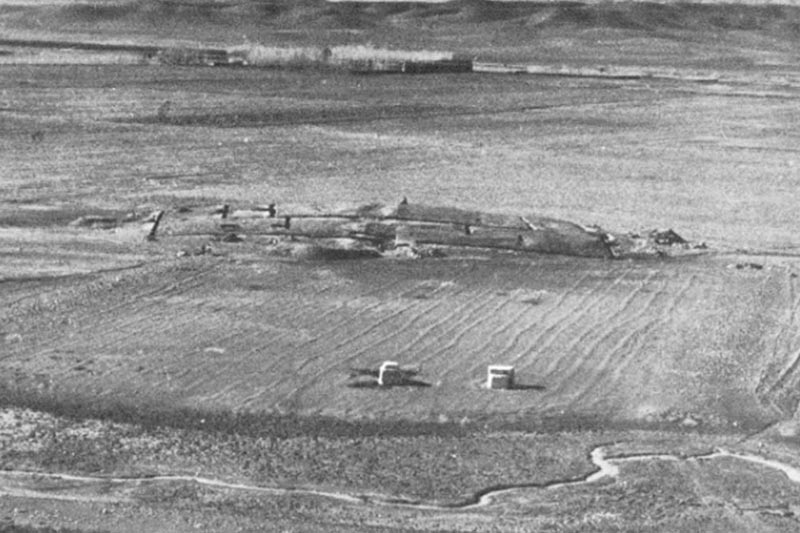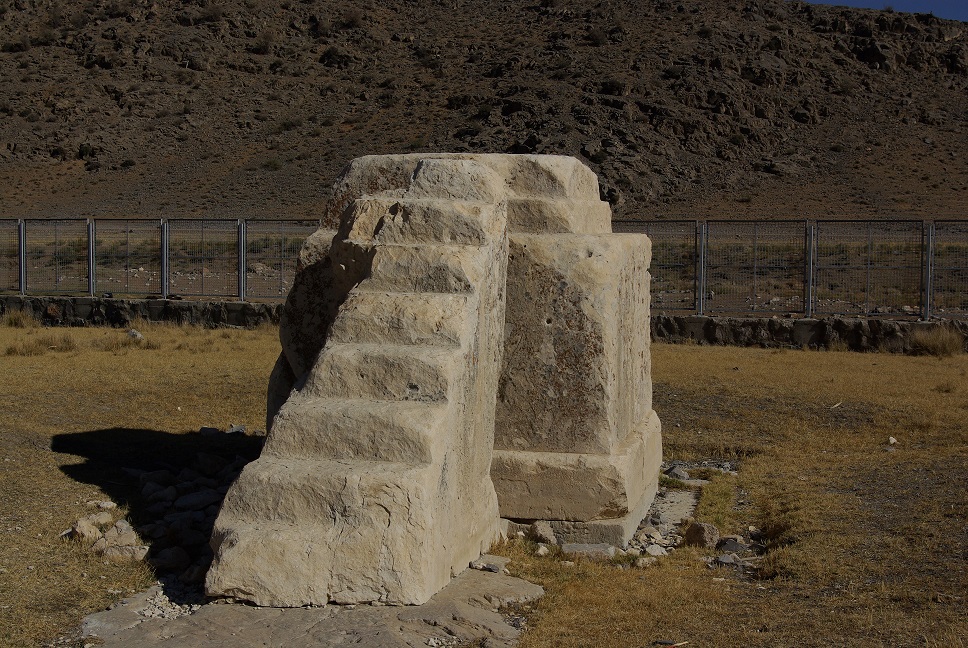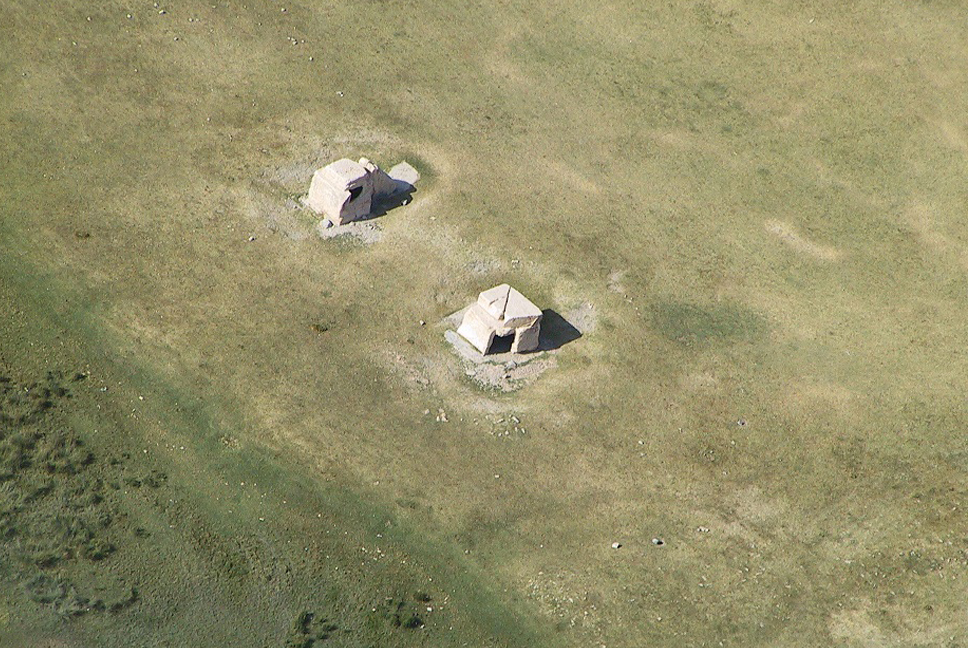The most northerly part on the Pasargadae site, some 2400 meter to the north of Cyrus the Great tomb, is an area known as worship or sacred precinct that is marked by the existence of two stone plinths that stand some nine meters apart. Set up on a sizeable stone foundation that reaches up over two meters in height, the plinths were constructed in white limestone and each rose from low-level black limestone borders that provided a characteristic dichromatic effect.
It has been convincingly argued that the function of the southern plinth, which was fronted by a monolithic flight of eight stone steps, was to serve as a platform from which the king could worship in the vicinity of a seemingly elevated fire altar, as depicted on Darius’ funerary monument at Naqsh-e Rostam. Since ample remains of the early Achaemenid stepped stone altars have also been found at other parts of the site, the close resemblance between these plinths and altars and the depiction of the religious ritual at Naqsh-e Rostam could perhaps be taken as one of the few hard and fast archaeological indications for religious continuity between the reigns of Cyrus and Darius.
Locating just 120 meters to the west of the stone plinths there is a terraced mound built of mud brick, measuring 75m by 50 m with the summit standing 5 m above the level of the plain.
The real function of the terrace mound is not clear but according to some observers it might have been built as a suitably distant terrace for those who were privileged to witness the solemn ceremonies that were performed at the two free-standing plinths or it probably might have been erected as an elevated stage for the sacrificial rites.









